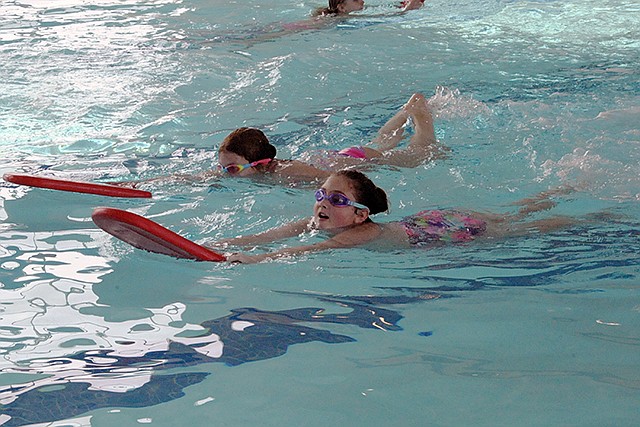CALIFORNIA - As a kindergartner five years ago, Alberto Osio could not touch the bottom of the city pool, and he was "terrified" about the idea of being in the water.
After five winters of learning swimming skills and safety through the California Elementary School physical education curriculum and teacher Jill Hampton, he said he now likes to swim, especially the backstroke.
Through an arrangement with the city of California to use the pool during the slowest public period, all classes kindergarten through fifth grade are bused to and from the pool for eight weekly, 50-minute P.E. classes.
The local school is the only one in the area to offer swimming in its curriculum to all grades, Principal Gary Baker said.
"I think that's cool," Osio said. "Then people will know how to swim and not drown so much."
That is the reason the school has made water education a priority, Baker said. Several California educators, including himself, have known children who drowned.
"We want all kids to master life-saving skills," he said. "Anything we can do to help prevent it is well worth it."
Centers for Disease Control statistics said from 2005-14, there were 3,500 fatal drownings. Of those, one in five was a child.
Drowning is the second leading cause of unintentional death for children, behind motor vehicle accidents.
Hampton, who learned to swim at her hometown country club pool, said she is pleased to offer the opportunity through the school.
"Every person - child or adult - should know how to swim," she said. "You need to at least be able to save yourself."
Although some students have an intense fear of the water at first, Hampton said, most acclimate eventually.
The younger classes, where most of apprehension is found, focus on simple tasks like using a kickboard, freestyle, treading water and backfloating.
With grades 3-5, they expand their skills to learn the backstroke, breaststroke, rotary breathing and submersion.
The challenge for Hampton is the students are sorted by age level and not skill level, she said. However, they have a rigid protocol for limited numbers in the pool at a time, except for the last 10 minutes of free play.
That allows her and substitute Henry Suddarth, of Tipton, to pay close attention to those who need extra help. For the skilled swimmers, she requires them to pass a skills test during every class period before they may move into the deeper end.
"I think students are more attentive and better behaved at the pool," Hampton said. "They know if they aren't, they're not going to get to swim."

